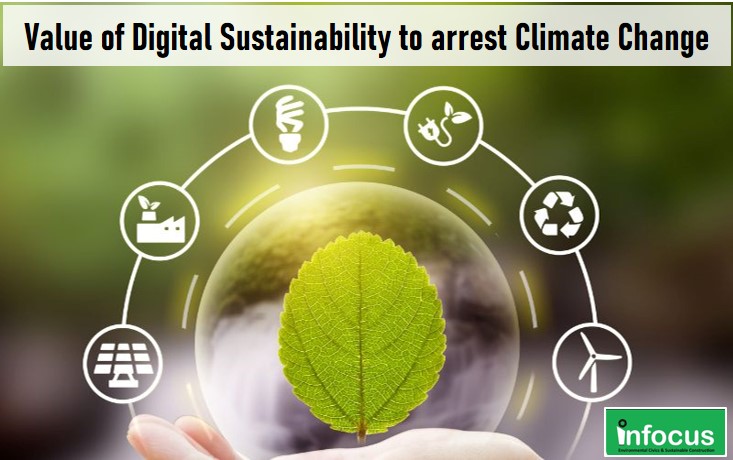In the quest to mitigate climate change, digital sustainability has emerged as a pivotal concept. This refers to the practices and technologies that aim to reduce the environmental footprint of digital activities. As the world becomes increasingly digital, the energy consumption and resource demands of our technology infrastructure have become significant contributors to climate change. Digital sustainability emphasizes the need for energy-efficient hardware and software design. This includes reducing the energy consumption of data centers, servers, and electronic devices and optimizing software code to run efficiently. Simply, embracing digital sustainability is not just a niche interest but a critical global priority. Which ensures all digital technologies are used sustainably by both companies and their customers.
Acknowledging Digital Sustainability’ Need:
Digitalization is one of the most globally developing phenomena, especially in recent years. IT (Information Technology) has completely disrupted the way we communicate and work, changing our daily habits. Even in our homes, digital devices have made everything different, affecting the way we manage our leisure time, many of the effects of digitization were unthinkable just a few years ago.
Digital sustainability is a crucial element in the fight against climate change. As our reliance on digital technologies continues to grow, so does the need to ensure that these technologies are used and developed sustainably. The digital sustainability encompasses a broad range of strategies designed to make our digital world more ecofriendly. This includes improving energy efficiency, promoting the use of renewable energy sources, optimizing digital storage and data processing, and minimizing electronic waste. As our dependence on digital technologies grows, so does the importance of ensuring that these technologies are developed and used in ways that are sustainable.
- Energy Consumption and Data Centers:
Data centers are at the heart of the digital economy, powering everything from cloud storage to streaming services. However, they are also significant consumers of energy. According to a report by the International Energy Agency, data centers consume about 1% of global electricity demand. This consumption is expected to grow as digitalization expands. To address this, companies are increasingly turning to renewable energy sources and energy-efficient technologies to power their data centers.
Google, for example, has committed to operating its data centers on 24/7 carbon-free energy by 2030. Such initiatives not only reduce the carbon footprint but also set a precedent for other organizations to follow. By leveraging renewable energy and improving energy efficiency, data centers can significantly cut their greenhouse gas emissions, contributing to the broader fight against climate change.
- E-Waste Management:
The rapid pace of technological advancement has led to a surge in electronic waste (e-waste). Discarded electronic devices contribute to environmental degradation and pose health risks due to the hazardous materials they often contain. Digital sustainability involves designing products with longer lifespans, promoting recycling and reuse, and supporting the circular economy.
Companies like Apple have made strides in this area by committing to use recycled materials in their products and offering trade-in programs that encourage consumers to return their old devices. By reducing e-waste, we can lessen the environmental impact of our digital lifestyle.
- Software Efficiency and Optimization:
Software plays a crucial role in digital sustainability. Efficient software can reduce the energy required to perform digital tasks. This involves writing code that is optimized for performance and resource use, as well as developing applications that run smoothly on energy-efficient hardware.
Moreover, cloud computing offers significant potential for reducing the environmental impact of digital activities. By centralizing data storage and processing, cloud services can optimize resource use and energy consumption more effectively than individual users can. The shift to cloud-based solutions, therefore, represents a key strategy in achieving digital sustainability.
- Promoting a Culture of Sustainability:
Digital sustainability is not solely the responsibility of tech companies and policymakers. Consumers and end-users also play a vital role. Awareness and education about sustainable digital practices can drive more responsible consumption and usage patterns. Simple actions like reducing unnecessary data storage, opting for energy-efficient devices, and supporting companies with sustainable practices can collectively make a significant impact.
Finally, educational initiatives and public awareness campaigns are essential in fostering a culture of sustainability. By making informed choices, individuals can contribute to the broader effort to mitigate climate change.
By
Editorial, Infocus



